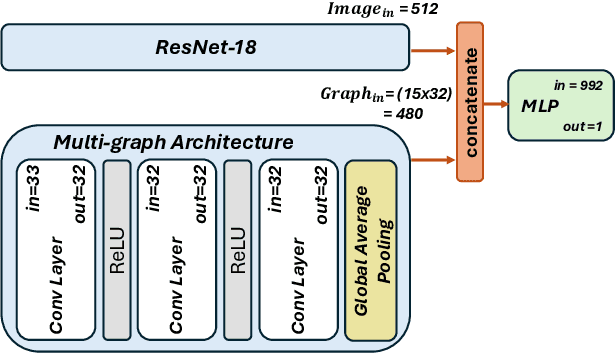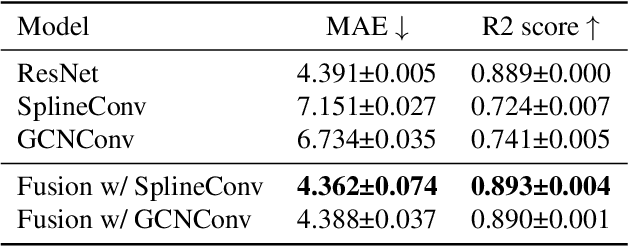Nairouz Shehata
Combining imaging and shape features for prediction tasks of Alzheimer's disease classification and brain age regression
Jan 14, 2025



Abstract:We investigate combining imaging and shape features extracted from MRI for the clinically relevant tasks of brain age prediction and Alzheimer's disease classification. Our proposed model fuses ResNet-extracted image embeddings with shape embeddings from a bespoke graph neural network. The shape embeddings are derived from surface meshes of 15 brain structures, capturing detailed geometric information. Combined with the appearance features from T1-weighted images, we observe improvements in the prediction performance on both tasks, with substantial gains for classification. We evaluate the model using public datasets, including CamCAN, IXI, and OASIS3, demonstrating the effectiveness of fusing imaging and shape features for brain analysis.
The Importance of Model Inspection for Better Understanding Performance Characteristics of Graph Neural Networks
May 02, 2024


Abstract:This study highlights the importance of conducting comprehensive model inspection as part of comparative performance analyses. Here, we investigate the effect of modelling choices on the feature learning characteristics of graph neural networks applied to a brain shape classification task. Specifically, we analyse the effect of using parameter-efficient, shared graph convolutional submodels compared to structure-specific, non-shared submodels. Further, we assess the effect of mesh registration as part of the data harmonisation pipeline. We find substantial differences in the feature embeddings at different layers of the models. Our results highlight that test accuracy alone is insufficient to identify important model characteristics such as encoded biases related to data source or potentially non-discriminative features learned in submodels. Our model inspection framework offers a valuable tool for practitioners to better understand performance characteristics of deep learning models in medical imaging.
A Comparative Study of Graph Neural Networks for Shape Classification in Neuroimaging
Oct 29, 2022Abstract:Graph neural networks have emerged as a promising approach for the analysis of non-Euclidean data such as meshes. In medical imaging, mesh-like data plays an important role for modelling anatomical structures, and shape classification can be used in computer aided diagnosis and disease detection. However, with a plethora of options, the best architectural choices for medical shape analysis using GNNs remain unclear. We conduct a comparative analysis to provide practitioners with an overview of the current state-of-the-art in geometric deep learning for shape classification in neuroimaging. Using biological sex classification as a proof-of-concept task, we find that using FPFH as node features substantially improves GNN performance and generalisation to out-of-distribution data; we compare the performance of three alternative convolutional layers; and we reinforce the importance of data augmentation for graph based learning. We then confirm these results hold for a clinically relevant task, using the classification of Alzheimer's disease.
 Add to Chrome
Add to Chrome Add to Firefox
Add to Firefox Add to Edge
Add to Edge